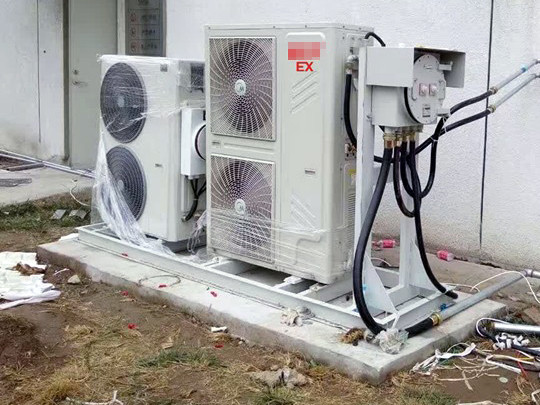Xiliga oo sii socda, Qaboojiyayaashu waxay ka beddeleen moodooyinka caadiga ah ee aan qarxin, iyo inta jeer ee cutubyada horumarsan ayaa sidoo kale horumaray. Laakin sidee bay qaboojiyeyaashu u taagan yihiin marka la barbar dhigo kuwa dhigooda ah ee aan qarxin? Hoosta, Waxaan u dhex galnay dhowr habab ilaalin oo la xoojiyey oo ah qaboojiyeyaasha aan rogrogmi karin, kaas oo xaqiijiya hawl-gal badbaado leh oo hufan inta lagu jiro isticmaalka maalinlaha ah.

1. Ilaalinta kulaylka xad dhaafka ah ee kuleyliyeyaasha gudaha:
Markaad ku shaqeyneyso habka kuleylka, Xawaaraha marawaxadaha oo gaabis ah ama filtarrada xidhan waxay hor istaagi karaan kulaylka ka baxaya gariiradda gudaha, taasoo keenta dusha sare ee kulaylka heerkulka u kac. Dhacdadani kaliya ma dhimayso hufnaanta kulaylka laakiin waxay sidoo kale keeni kartaa kulaylka qalabka. Sidaa awgeed, Qaboojiyaha aan qaraxa lahayn inverter-ku waxa ay ku daraan ilaalinta kulaylka oo dhamaystiran ee kulaylka gudaha. Nidaamku wuxuu xaddidaa kororka soo noqnoqda kombaresarada marka heerkulka qolku ka sarreeyo 53°C; waxay yaraynaysaa soo noqnoqda kombaresarada waxayna ku shaqaysaa matoorka marawaxada dibadda xawaarihiisa hoose marka uu dhaafo 56°C; oo waxay joojisaa kombaresarada waxayna kicisaa kulaylka ama ilaalinta xad dhaafka ah marka heerkulku ka sarreeyo 65°C. Heerarkan heerkuleed ee halista ah waa lala socdaa oo lagu baraarugaa iyada oo loo marayo muraayadaha bandhigga, nalalka tilmaame, iyo xamaasad.
1. Compressor Ilaalinta hadda taagan:
Si aad uga ilaaliso socodka xad dhaafka ah ee shaqayn kara ee dhaawici kara dabaylaha kombaresarada, Qaboojiyaha aan qaraxa ka celin karin inverter waxay ku qalabaysan yihiin difaac adag oo xad dhaaf ah. Inta lagu jiro marxaladda qaboojinta, haddii kombaresarka hadda uu ku dhufto 9.6A, Microprocessor-ka nidaamku wuxuu kiciyaa calaamadda xakamaynta si looga hortago kororka soo noqnoqda; at 11.5A, waxay calaamad u tahay in la yareeyo soo noqnoqoshada; iyo 13.6A, waxay kicisaa calaamad difaac si ay u joojiso hawlgalka kombaresarada. Nidaamyada la midka ah ayaa lagu dabaqaa xilliga kuleylka, oo leh heerar gaar ah oo hadda lagu dejiyay 13.5A, 15.4A, iyo 18A, siday u kala horreeyaan. Mid kasta oo ka mid ah marxaladahan xasaasiga ah ayaa si muuqata loogu calaamadeeyay isticmaalaha iyada oo loo marayo muraayadaha bandhigga, nalalka tilmaame, iyo qeylo dhaanta wacyi gelinta iyo badbaadada.
 Qaraxa Shenhai-Caddaynta
Qaraxa Shenhai-Caddaynta
